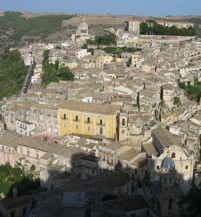
dal 1996 in continua innovazione tecnologica!
Sfrutta tecnologie avanzate per avere un sito web ottimizzato al 100%

Monuments and places of interesseRagusa has been catalogued in 2002 a world heritage site, is one of the most important art cities in Italy, thanks to a variety of artistic and archaeological treasures, legacy of its ancient history.
The reconstruction of the city after the earthquake of 1693 had famous actors such as V, Palma, John Vermexio, Sebastiano Ittar, Vincenzo Sinatra and above all the famous Rosario Gagliardi. These, with the help of a bevy of local sculptors and master builders, has helped create a unique phenomenon: the baroque of Val di Noto.
It is adorned by the local stone volute, of voids and solids, columns and capitals, statues and architectural compositions, of which probably the Duomo di San Giorgio is the ultimate expression. Since the end of the sixteenth century to Ragusa circulated books such as Sebastiano Serlio's architectural treatise, i Quattro libri dell'Architettura by Palladio, the works of Domenico Fontana and other texts of famous architects.
Il barocco Ragusa is a reworking of works or drawings, custom templates and masters. Made with local stone, warm Golden, effects, related only to the Baroque. Most of the artistic heritage, with the exception of the Cathedral of St. John the Baptist and some 18th century building, is located in the old quarter of Ibla.
The only area of Ragusa Ibla contains over fifty churches, most are in the late Baroque style. Even the historical buildings are numerous. Of all structures built between late Antiquity and the end of the 17th century there are only fragments:
